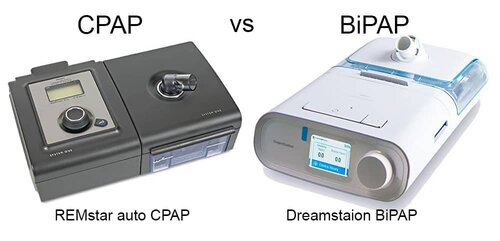Bilevel Positive Airway Pressure (BPAP)
Bilevel positive airway pressure device (BPAP) is a non-invasive ventilation therapy commonly used to facilitate breathing. A BPAP delivers separately adjustable higher inspiratory PAP (IPAP) and lower expiratory PAP (EPAP). The difference between the IPAP and the EPAP provides a level of ventilatory pressure support that is useful in augmenting ventilation in patients with Obstructive sleep apnea (OSA) and concomitant hypoventilation as well as for patients manifesting any of the various hypoventilation syndromes. Patients diagnosed with OSA, and hypoventilation include those with the Obesity Hypoventilation Syndrome (OHS) and the Overlap Syndrome (OSA and COPD). BPAP is also useful for treating patients who have been unable to tolerate or acclimate to a Continuous positive airway pressure device (CPAP), the latter often manifesting in complaints of excessive pressure and/or difficulty breathing out against the prescribed CPAP level. The EPAP of BPAP can generally be set to a lower level than the CPAP level, the resulting pressure support of the Inspiratory (I) pressure minus the Expiratory (E) pressure making it easier to breathe out against pressure. BPAP’s “pressure support” makes breathing easier for patients afflicted with Chronic obstructive pulmonary disease (COPD), asthma, and other respiratory diseases in which difficulty exhaling is a predominant feature.

